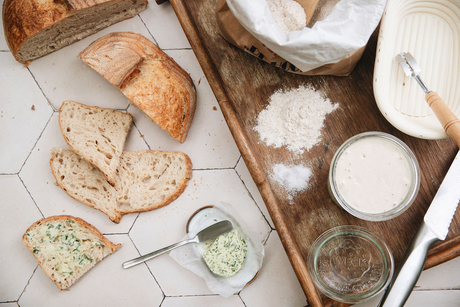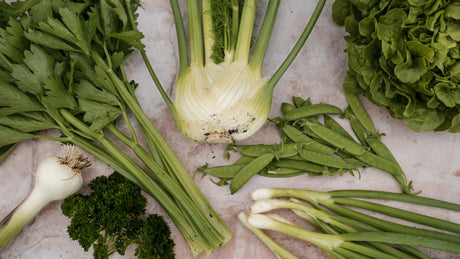using wood ash in the garden
A question that is often asked is "Can I use
wood ash from the stove in the vegetable garden?". We wonder whether ash from the wood stove is helpful or harmful. Anyone who has a wood stove will probably have a lot of wood ash during these winter days. Read on to find out more about it.

Should I use
wood ash in my vegetable garden? The short and sweet answer is 'Yes'. But we do need to be careful how and when we process it in our vegetable garden. In any case, processing the
wood ash in our
compost is a good idea. Throwing the
wood ash away is a waste.
using wood ash in the garden - fertilizer
Wood ashes are an excellent source of the mineral
lime and the growth substances Potassium (Potassium) and
phosphorus . Potassium ensures the firmness of the plant and increases resistance to diseases, pests and drought. In addition, plants become more winter-hardy by giving
phosphorus and potassium.
Phosphorus ensures the development of the roots of the plants, the flower and fruit formation, also give in moderation. In addition, wood ashes contain many trace elements that plants can use well.

But beware! Wood ashes can be used directly in the garden but in moderation. You can sprinkle it lightly over your fruit crops, root crops, cabbage crops and leafy crop beds. But I would not recommend more than 'a layer of dust' on your soil. I actually prefer to use it on my
compost heap. It provides a nice addition to many nitrogenous things that we throw on our
compost heap (green waste, manure, ...). On my
compost I spread in layers a bucket of 10 liters on about 2 m³. Also make sure that you sieve the
wood ash once so that no large pieces of wood go directly into your garden.

If you overdo it with hardwood ashes in your vegetable garden, the lye and salts present will cause problems in your vegetable garden. Specifically, these substances will burn your plants. If you let your wood ashes rot with your
compost , the salts and lye will largely wash away.
You can't use all
wood ash . It's best to use ashes from solid hardwood such as oak, beech or maple. Hardwood ashes have a better effect in the vegetable garden than ashes from pine (pine, fir, cedar, ...) or other softwoods such as lime, poplar or willow. If you burn a lot of waste wood with paint residues, pressed board material with a lot of glue, soaked or otherwise treated wood, don't use the ashes in your vegetable garden. There are of course ecological alternatives to
Potassium and
Phosphorus (click on the links)
Using Wood Ash in the Garden – Some More Benefits
 Wood
Wood ashes are also very effective against diseases and pests. The salt content in the wood kills and repels snails and other soft invertebrates such as grubs. To combat snails, you can spread a thin layer
of wood ash around your plants. When it rains, the salt washes away from the
wood ash and you have to spread new
wood ash . Here too, you can never overdo it, salt and lye burn your plants. But in addition to the beer trap, the evening patrol in the garden (picking off snails), the copper wire, the nematodes (worms),
wood ash can be an effective weapon against snails.
Another advantage of
wood ash is that it can increase the pH values in the soil and in your
compost . The mineral
lime we talked about earlier ensures this. People with a soil that is too acidic can certainly get an extra benefit from
wood ash . So be careful with acidic plants such as azaleas, blueberries,
potatoes and rhubarb. If you have a pH of 6.5 to 7 or higher, do not use
wood ash in your vegetable garden.
Wood ash , when used correctly is a cheap fertilizer for the garden!
 Should I use wood ash in my vegetable garden? The short and sweet answer is 'Yes'. But we do need to be careful how and when we process it in our vegetable garden. In any case, processing the wood ash in our compost is a good idea. Throwing the wood ash away is a waste.
Should I use wood ash in my vegetable garden? The short and sweet answer is 'Yes'. But we do need to be careful how and when we process it in our vegetable garden. In any case, processing the wood ash in our compost is a good idea. Throwing the wood ash away is a waste.
 But beware! Wood ashes can be used directly in the garden but in moderation. You can sprinkle it lightly over your fruit crops, root crops, cabbage crops and leafy crop beds. But I would not recommend more than 'a layer of dust' on your soil. I actually prefer to use it on my compost heap. It provides a nice addition to many nitrogenous things that we throw on our compost heap (green waste, manure, ...). On my compost I spread in layers a bucket of 10 liters on about 2 m³. Also make sure that you sieve the wood ash once so that no large pieces of wood go directly into your garden.
But beware! Wood ashes can be used directly in the garden but in moderation. You can sprinkle it lightly over your fruit crops, root crops, cabbage crops and leafy crop beds. But I would not recommend more than 'a layer of dust' on your soil. I actually prefer to use it on my compost heap. It provides a nice addition to many nitrogenous things that we throw on our compost heap (green waste, manure, ...). On my compost I spread in layers a bucket of 10 liters on about 2 m³. Also make sure that you sieve the wood ash once so that no large pieces of wood go directly into your garden.
 If you overdo it with hardwood ashes in your vegetable garden, the lye and salts present will cause problems in your vegetable garden. Specifically, these substances will burn your plants. If you let your wood ashes rot with your compost , the salts and lye will largely wash away.
You can't use all wood ash . It's best to use ashes from solid hardwood such as oak, beech or maple. Hardwood ashes have a better effect in the vegetable garden than ashes from pine (pine, fir, cedar, ...) or other softwoods such as lime, poplar or willow. If you burn a lot of waste wood with paint residues, pressed board material with a lot of glue, soaked or otherwise treated wood, don't use the ashes in your vegetable garden. There are of course ecological alternatives to Potassium and Phosphorus (click on the links)
If you overdo it with hardwood ashes in your vegetable garden, the lye and salts present will cause problems in your vegetable garden. Specifically, these substances will burn your plants. If you let your wood ashes rot with your compost , the salts and lye will largely wash away.
You can't use all wood ash . It's best to use ashes from solid hardwood such as oak, beech or maple. Hardwood ashes have a better effect in the vegetable garden than ashes from pine (pine, fir, cedar, ...) or other softwoods such as lime, poplar or willow. If you burn a lot of waste wood with paint residues, pressed board material with a lot of glue, soaked or otherwise treated wood, don't use the ashes in your vegetable garden. There are of course ecological alternatives to Potassium and Phosphorus (click on the links)
 Wood ashes are also very effective against diseases and pests. The salt content in the wood kills and repels snails and other soft invertebrates such as grubs. To combat snails, you can spread a thin layer of wood ash around your plants. When it rains, the salt washes away from the wood ash and you have to spread new wood ash . Here too, you can never overdo it, salt and lye burn your plants. But in addition to the beer trap, the evening patrol in the garden (picking off snails), the copper wire, the nematodes (worms), wood ash can be an effective weapon against snails.
Another advantage of wood ash is that it can increase the pH values in the soil and in your compost . The mineral lime we talked about earlier ensures this. People with a soil that is too acidic can certainly get an extra benefit from wood ash . So be careful with acidic plants such as azaleas, blueberries, potatoes and rhubarb. If you have a pH of 6.5 to 7 or higher, do not use wood ash in your vegetable garden.
Wood ash , when used correctly is a cheap fertilizer for the garden!
Wood ashes are also very effective against diseases and pests. The salt content in the wood kills and repels snails and other soft invertebrates such as grubs. To combat snails, you can spread a thin layer of wood ash around your plants. When it rains, the salt washes away from the wood ash and you have to spread new wood ash . Here too, you can never overdo it, salt and lye burn your plants. But in addition to the beer trap, the evening patrol in the garden (picking off snails), the copper wire, the nematodes (worms), wood ash can be an effective weapon against snails.
Another advantage of wood ash is that it can increase the pH values in the soil and in your compost . The mineral lime we talked about earlier ensures this. People with a soil that is too acidic can certainly get an extra benefit from wood ash . So be careful with acidic plants such as azaleas, blueberries, potatoes and rhubarb. If you have a pH of 6.5 to 7 or higher, do not use wood ash in your vegetable garden.
Wood ash , when used correctly is a cheap fertilizer for the garden!







